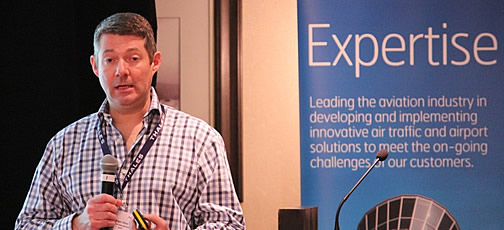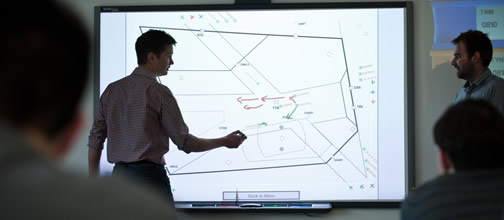What can be done to improve global ATM Safety?
5 November 2013NATS produced one of the first Safety Management Systems (SMS) for an air traffic organisation in 1991. SMS are the way organisations like NATS ensure they explicitly manage the safety of their operations.
After twenty-two years’ experience and with one of the best safety records in the world, we have recognised that SMS needs to evolve to remain effective, and to give us a competitive edge within the industry. This is essential in an increasingly commercial environment and an environment where rule-makers believe that additional and more complicated rules make an organisation safer.
We believe that we are much stronger if we develop new strategies and techniques for safety management in conjunction with other likeminded organisations. NATS therefore co-lead the CANSO Global Future SMS working group with Airservices Australia and, supported by other CANSO members, have developed a number of new products which will be presented at the Global Safety Standing Committee being held in Scotland this week.

Roger Dillon – Head of External Safety
Today we discussed the second edition of the CANSO Standard of Excellence in Safety Management Systems (SoE in SMS). This sets the benchmark standard for SMS maturity within the industry and has already been adopted by the European Aviation Safety Agency and the European Commission as one of the key Safety Key Performance Indicators for the Single European Sky. CANSO has carried out a post-implementation review of the SoE in SMS and has raised the bar by adding in several other study areas such as Safety-by-Design and Fatigue Risk Management and aligning the standard to the International Civil Aviation Organisation (ICAO) Annex 19 – the international standard for safety management in aviation. We will encourage regulators to follow the industry lead in improving safety.
We’ve also been looking at how we can learn from safety approaches in other industries and will present and discuss a CANSO standard for a Common Safety Methodology for Risk Assessment. This is a pragmatic methodology used in other safety related industries and provides guidance on using codes-of-practice and reference systems to provide safety assurance for change, in addition to the more generally used numerical analysis methodologies. The assurance provided by these alternatives is better, cheaper and more understandable to non-specialists. The work paves the way for us to think differently about how we manage safety and risk in the future.
Later this week, the CANSO Global Safety Conference will also be talking about a new piece of work in support of CANSO’s Vision 2020, the strategic framework for future ATM which Jeff Poole – CANSO’s Director General – mentioned in the interview we featured on this blog yesterday. This is to develop safety assurance methodologies for introducing automation in to air traffic systems. In this we hope to be able to learn from the successes and failures of other industries introducing automation, in particular the way pilots fly heavily automated aircraft. My colleague Neil May, from NATS’ Human Factors team, will be talking more about automation in ATM safety on the blog later this week.
Comments
Please respect our commenting policy and guidelines when posting on this website.



